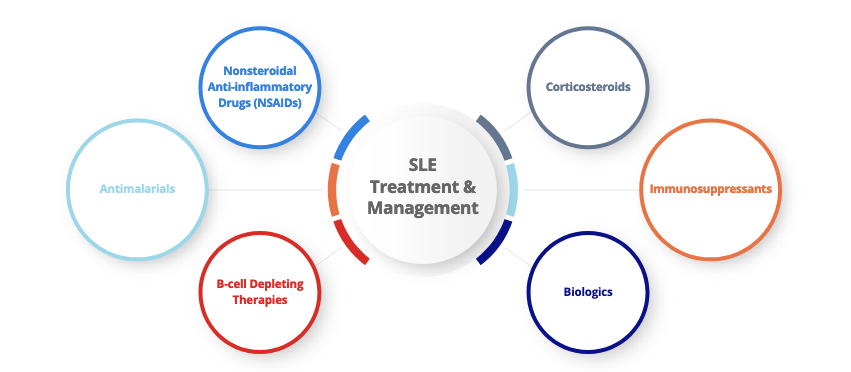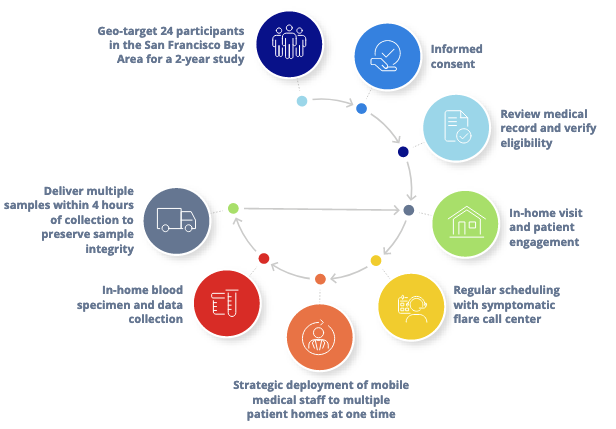
Longitudinal Sampling
for a Lifelong Disease
SYSTEMIC LUPUS ERYTHEMATOSUS
MISSION
A 2-year longitudinal SLE study with a global biopharmaceutical company to profile blood biomarkers during symptomatic flare episodes.
CHALLENGES
- Enroll eligible SLE patients in the San Francisco Bay Area for frequent long-term blood sampling.
- Deliver fresh blood samples within 4 hours of collection to study sponsor for subsequent biomarker analyses.
SOLUTION
A geo-targeted recruitment approach coupled with strategically designed sample collection maximized the study’s potential. Rapid recruitment, high participant retention (>95%), and swift delivery of samples helped drive the study’s execution and success.
The Unmet Need for Better Treatment Options
As a chronic autoimmune disease, patients with systemic lupus erythematosus (SLE) experience widespread inflammation and unpredictable disease flare episodes that progressively worsen over time, contributing to tissue and organ damage.Its heterogeneous nature, slow disease progression, and seemingly random symptom flares complicate research studies aimed at improving therapeutic options for SLE patients.

Early diagnosis and a balance of treatment side effects with pain management are critical to minimize organ damage. Although biologic-based therapeutics show great promise, many studies fail to meet their primary efficacy endpoints,¹,² leading to lost research dollars and lack of effective treatments compared with other autoimmune diseases.
Connecting the Missing Pieces in SLE Study Designs

Participants
San Francisco Bay Area with a medical diagnosis for SLE
Exclusion Criteria
Long-term corticosteroid use or B-cell depleting therapy
Commitment
24-month longitudinal sampling, at least once every two months during the first 12 months,
with follow-up collections at 18 and 24 months
Commitment
Whole blood delivered within 4 hours post-collection to preserve sample integrity
Downstream Analyses
Immune cell biomarker profiling during symptomatic flare episodes compared with non-episodic samples
How Did We Rise to the Challenge?
A workflow designed to expedite study completion and maximize success.
The sample collection strategy was optimized to simultaneously collect several blood samples at a time, allowing for reduced shipping costs and streamlined sample processing. With >10 samples longitudinally collected per patient and delivered in the same day, we maintained a >95% retention rate over the 2-year period—meeting and exceeding study expectations.

A longitudinal study design and sample collection set researchers up for increased confidence in their ability to evaluate circulating immune cells during symptomatic episodes of SLE. In turn, downstream mechanistic studies returned reliable results related to the critical changes in immune cell composition and activation status, gene expression, and epigenetic modifications. Our innovative approach empowers scientific studies and drives the sort of discoveries set to make a tangible difference in the lives of patients living with SLE.
REFERENCES
¹ Isenberg DA, Rahman A. Systemic lupus erythematosus in 2013. Taking a closer look at biologic therapy for SLE. Nat Rev Rheumatol. 2014;10(2):71–72.
² Touma Z, Gladman DD. Current and future therapies for SLE: obstacles and recommendations for the development of novel treatments. Lupus Sci Med. 2017;4(1):e000239.


